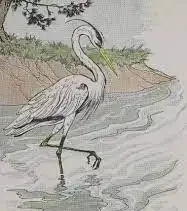The Wolf and the Lion
A Wolf had taken a Lamb and was carrying it off to his den to eat it. But his plans were very much changed when he met a Lion, who, without making any excuses, took the Lamb away from him.

The Wolf made off to a safe distance, and then said in a much-hurt tone:
“You have no right to take my thing like that!”
The Lion looked back, but as the Wolf was too far away to be taught a lesson without too much trouble, he said:
“Your thing?
Did you buy it, or did the Shepherd make you a gift of it?
Pray tell me, how did you get it?”
Moral of the story
Honesty is the best policy: Taking something that doesn’t belong to you is not right.
Don’t expect fairness in dishonesty: If you obtain something through dishonest means, it may not stay with you.
Questions for the children
- Why do you think the Wolf claimed the Lamb was his thing?
- Can you think of a time when someone tried to take credit for something they didn’t do or own?
Post Note: This story is based on Aesop’s fable, written around 600 BC. In this retelling, we’ve used simpler words to make the story easier for young readers to understand.





